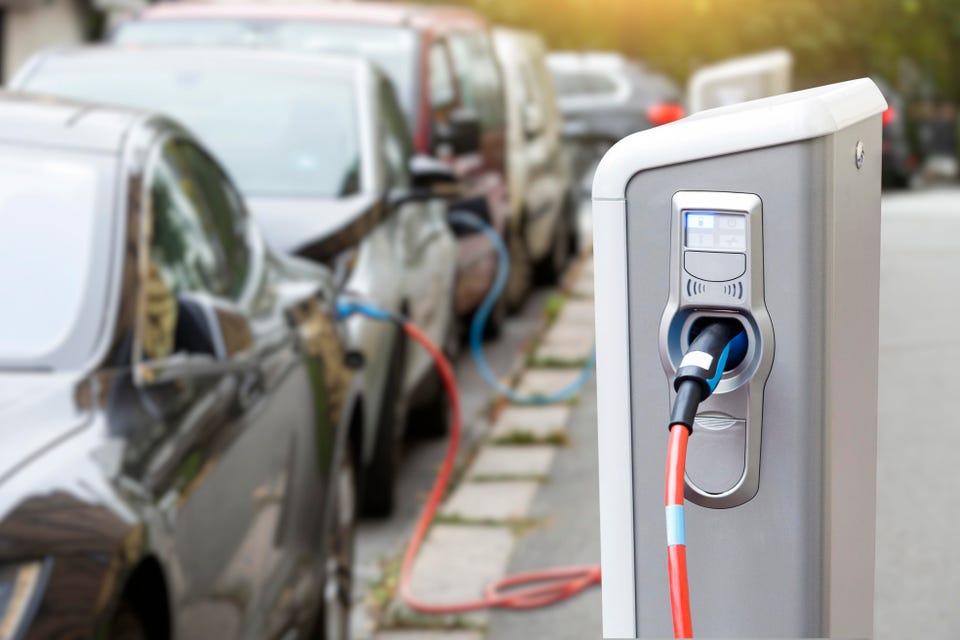How Electric Vehicles Are Disrupting Automobile Supply Chains

As electric vehicles (EVs) supplant gas-fueled cars, companies across the automobile supply chain are collaborating to create the circular economy that will reduce carbon emissions and lead to sustainable business models. Suppliers are already co-innovating across boundary-breaking ecosystems, while as-a-service offerings are delighting drivers and business partners with new experiences.

Data intelligence from electric batteries
Of course, swapping out fossil fuels for electric-powered cars won’t automatically address environmental concerns. Sustainable battery sourcing and recycling is critical. McKinsey researchers expected the recycling market to triple in size over the next 15 years or so, when more batteries reach their end-of-life. Sustainable business includes pulling the raw materials for batteries out of the ground once, and tracking information to recycle components as long as possible.
“Full lifecycle usage data from EVs will become the most valuable asset for OEMs and their partners,” said Sebastian Scharfenberger, automotive industry solution manager at SAP. “OEMs will need to trace sustainable metrics, such as recycling quotas, across the entire lifetime of the vehicle and its components, from materials sourcing to production, green energy usage, and parts reuse. Automakers are well aware that they need to get closer to customers and suppliers so they can make the most of this data from the EV value chain, transforming the industry into a more sustainable business.”
Servitization fuels EV-powered revenue
Generating service-based revenue from EV data is no mirage. Loaded with scads of software, electric-powered cars, trucks, and other modes of transportation provide automakers with intelligence that they can turn into revenue streams – for themselves and partners. One study predicted the value of in-vehicle payment services will exceed $86 billion in 2025.
“Subscription-based models offer car buyers and lessees the flexibility to initially drive away with certain capabilities, adding services when needed,” said Andreas Klaschka, director of solution management for sales, service and marketing at SAP. “People could pay for heated seats only during colder months or advanced navigation when they take a road trip during vacation.”
Consumers long used to pre-bundled upgrades from their automobile dealer may balk at pay-by-usage fees. But the truth is that subscriptions help drivers pay only for the services they want and use. Automakers and a huge ecosystem of industry partners are vying for a hefty slice of these digital revenue streams. For example, insurance companies could offer international driving coverage upgrades directly from someone’s car. It’s easy for drivers to obtain immediate insurance, while the automaker receives a percentage of the fee for partnering with the insurer.
Data monetization from e-mobility has unlimited possibilities. Companies can offer lessees additional mileage packages when they see drivers approaching their limit before the lease ends. With information about someone’s driving habits, companies have a better idea of what kind of condition the car will be in at the end of the lease. They could lower the costs of an upgraded leasing agreement if the data indicates safe driving such as no hard braking, exceeding speed limits, or fast acceleration rates. The same goes for warranty extensions. Using sensor-based data, companies can price contracts based on the condition of the car – for better or worse – to maximize profits.
“Secure, accurate data sharing between partners requires a cloud-based platform,” said Klaschka. “That’s why we developed SAP Digital Vehicle Hub. Whether they are insurers, service technicians, automakers, dealers, leasing company, or others, each partner on the automobile value chain can see and use the vehicle-related data that’s relevant to them.”
Automotive ecosystems collaborate for circular economy
Connected data is just as important to suppliers up and down the automobile supply chain that are confronted with increasingly stringent environmental regulations. Many are collaborating in open communities like the Catena-X Automotive Network to help prove regulatory compliance and expand market opportunities. One use case from members in the network is a Digital Product Passport, essentially a digital twin of the physical battery that would track sustainability-related data across its lifecycle. The passport would be designed to meet the new EU Battery Directive, which is part of the European Green Deal, and expected to begin taking force this year. With relevant information, companies across the automobile value chain can help achieve the directive’s goals, including the establishment of a market for secondary raw materials and creation of a more climate-friendly circular economy.
There are many unknowns about the impact of EVs on the automobile supply chain. One thing that’s clear is the enormous growth of the semiconductor market that supplies the chips inside EVs. When the chip shortage left automakers and dealerships with empty lots earlier in the pandemic, companies across the entire automobile landscape discovered the perils of super-lean supply chains. Fast forward three years later, McKinsey & Company expected the global semiconductor market to become a trillion-dollar industry by 2030, and automotive supply chains are forging deeper partnerships for resilience and agility.
Learn more about how design and manufacturing contributes to sustainable supply chains.
